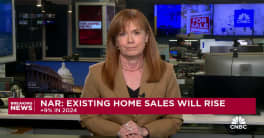The housing boom and its accompanying price appreciation significantly distorted buyer choices about mortgage financing according to an Economic Letter authored by two economists with the Federal Reserve Bank of San Francisco. This distortion was most notable in those markets with the highest house price appreciation where the authors noted price gains directly influenced mortgage choices.
Fred Furlong, a group vice president in the Economic Research Department and Yelena Takhtamanova, an economist in the Economic Research and Public Information Departments at the San Francisco bank found that, in high-appreciation markets, the pace of home price increases was strongly linked to the popularity of adjustable rate mortgages but in other markets house prices had no impact on mortgage choice. The higher price appreciation also muted the influence of fundamental drivers of mortgage choice such as mortgage interest rate margins, perhaps because homebuyers in those markets expected to hold their loans only briefly before refinancing.

Fixed-rate mortgages (FRMs) have been the most popular loans in the U.S. but Figure 1 shows that the adjustable rate mortgage (ARM) share of mortgages as reported by both Freddie Mac and the LPS Applied Analytics database became more popular during the housing boom and especially during the years of greatest price appreciation which the authors defined as a two-year change in the CoreLogic Home Price Index greater than 20 percent. In those markets and among borrowers with lower credit ratings ARM shares were notably higher from 2000 to 2007

Earlier research has shown the interest rates are key determinants of mortgage decisions and for various reasons FRM tend to have higher initial rates than ARM. One of these reasons is pricing for credit risk including credit scores and income. The margin on an FRM is also related to conditions such as expected house price appreciation and volatility and non-loan factors such as prepayment provisions and loan-to-value ratios. Because of their shorter term ARM rates are based on a much simpler standard.
Individual borrowers are not necessarily indifferent to the two loans types. Earlier research found that borrowers who are likely to move or who are financially constrained are more likely to choose ARMs which generally have lower rates. Option ARMS may be especially attractive to borrowers with incomes that vary from year to year.
Housing market conditions also could affect borrower mortgage choices. For example, rapid house price increases could spur demand for homeownership. At the same time, such house price increases, to the extent lenders ease down payment requirements, may make it easier for financially constrained borrowers to get credit which could change the kinds of borrowers who choose ARMs. It may also have altered the sensitivity of mortgage choice to market metrics such as the term premium or margins on ARMS and FRMs. Research shows that in speculative bubbles decisions about buying and financing real estate can be less systematically linked to fundamentals such as pricing.
The authors examined how rising house prices affect mortgage choice using a random sample of 6.6 million first lien mortgages originated from 2000 to 2007 from LPS data and created a model allowing three choices; an FRM, a non-option ARM and an option ARM and made separate estimates for home purchases and mortgage refinancing. The model used as key determinants of mortgage choice financial conditions including a measures of term premium, the slope of expected short term interest rate, and interest rate volatility and markup for each mortgage type.
House price appreciation is measured as the two-year percentage change in the CoreLogic Home Price Index for the county in which the home is located and volatility is measured as the variation in the monthly percentage change in the corresponding county-level CoreLogic index over the two years before a loan's closing date. The model includes controls for loan terms such as loan-to-value ratio, borrower characteristics such as credit score, and year-specific effects.

Figure 3 shows that the model estimates for non-option ARM shares track actual shares over the sample period. ARM shares generally increased in both high- and low-appreciation markets from 2001 through early 2004. However, during the height of the housing boom, the ARM share was notably higher in high-appreciation markets.

Rising house prices affected borrower mortgage choice in high- and low-appreciation markets by a considerable amount. Borrowers were much more sensitive to the pace of appreciation in high-appreciation markets but this had no significant effect on mortgage choice in low-appreciation markets across all credit risk groups. For example, for homebuyers in high-appreciation markets, a 15% house price increase raised the probability of choosing an ARM by about 0.15 percentage point. But that same house price increase had essentially no effect in low-appreciation markets.
Borrowers purchasing homes in both high- and low-appreciation markets mostly responded as expected to financial market metrics. However, in high-appreciation markets they tended to be less sensitive to loan margins than in low-appreciation markets. Differences in the effect of the ARM margin were evident, especially among borrowers with low FICO credit scores. The sensitivities of mortgage choice to some of the market metrics such as term premium also were statistically different in the high- and low-appreciation markets.
The authors conclude that during the housing boom, borrowers increasingly opted for ARMs instead of FRMs and this was most pronounced in markets where house prices rose rapidly. In such markets, house price gains were strongly correlated with a rising ARMs share for home purchases. Moreover, in high-appreciation markets, the effects of fundamentals such as mortgage interest rate margins were muted. This muting effect was most apparent in ARM margins, that is, the interest rate spread between ARMs and short-term Treasury yields.







